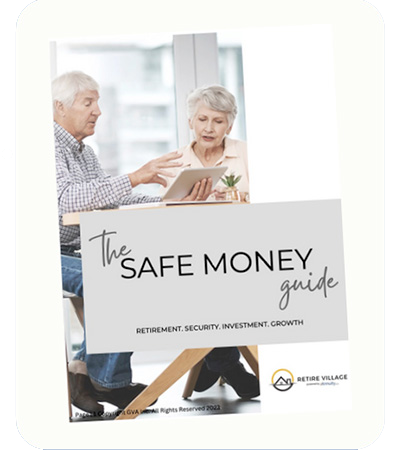
Article Library

David Townsend
David Townsend
2246 South 308th Street
Federal Way, WA 98003
david.townsend@agent.annuity.com
(253) 381-2328
How to Mitigate Systemic Risk in Financial Markets for a Secure Retirement
Systemic risk, the threat of a collapse within an entire financial system or market, may profoundly affect your retirement savings. This type of risk may arise from various factors, including economic downturns, geopolitical events, and financial crises, impacting all investments regardless of individual performance. Therefore, understanding how to mitigate systemic risk is crucial for protecting your retirement funds. Here are several strategies to help you navigate and reduce systemic risk to ensure a secure retirement.
Diversification Across Asset Classes
Diversification is a fundamental strategy to mitigate systemic risk. By spreading your investments across various asset classes, such as stocks, bonds, real estate, and commodities, you may reduce the impact of a downturn in any single market. Different asset classes often react differently to economic changes. For instance, while stocks may suffer during a recession, bonds might perform better, thus balancing your overall portfolio performance.
Geographic Diversification
Investing in global markets may further reduce systemic risk. Economic and political events may affect regions differently; hence, having a geographically diversified portfolio may ensure that not all your investments are exposed to the same risks. Consider allocating funds to international stocks and bonds to benefit from growth opportunities in other economies and to hedge against domestic market volatility.
Incorporating Safe-Haven Assets
Safe-haven assets like gold, treasury bonds, and high-quality corporate bonds are known for their stability and low correlation with the broader market. These assets typically hold or increase their value during periods of market turmoil. Including safe-haven assets in your retirement portfolio may provide a buffer against systemic shocks, preserving capital when other investments may be declining.
Utilizing Annuities
Annuities may offer a stable and guaranteed income stream, providing a hedge against market volatility. Fixed annuities, in particular, are not subject to market fluctuations, ensuring a predictable income in retirement. While annuities should not replace a diversified investment portfolio, they may be valuable to your retirement strategy, offering peace of mind and financial stability.
Regular Portfolio Rebalancing
Regularly rebalancing your portfolio helps maintain your desired asset allocation and manage risk. Over time, some investments will perform better than others, causing your portfolio to drift from its original allocation. Rebalancing involves selling outperforming assets and buying underperforming ones to return to your target allocation. This disciplined approach ensures that you consistently buy low and sell high, mitigating the impact of market volatility.
Staying Informed and Flexible
Keeping abreast of economic indicators, market trends, and geopolitical events may help you make informed investment decisions. Flexibility is key; being willing to adjust your strategy in response to changing market conditions may help protect your retirement savings. This might involve shifting more funds into safe-haven assets during turbulent times or seeking new investment opportunities in emerging markets.
Emergency Fund and Cash Reserves
Having an emergency fund or cash reserves is essential for managing financial uncertainty. A cash buffer may cover unexpected expenses without forcing you to liquidate investments during a market downturn. Aim to have three to six months’ living expenses in an easily accessible account. This provides financial security and prevents you from disrupting your long-term investment strategy during market upheavals.
Working with a Financial Advisor
A financial advisor may offer personalized guidance that fits your specific circumstances. They assist in assessing your risk tolerance, creating a thorough investment plan, and making necessary adjustments over time. Their expertise is especially helpful in understanding intricate market conditions and applying strategies to reduce systemic risk.
Conclusion
Mitigating systemic risk in financial markets is essential for safeguarding your retirement savings. You may build a resilient retirement plan through diversification across asset classes and geographic regions, incorporating safe-haven assets, utilizing annuities, regular portfolio rebalancing, staying informed, maintaining an emergency fund, and working with a financial advisor. By proactively managing risk and adapting to changing market conditions, you may achieve financial stability and peace of mind for your retirement years.
Many people have learned about the power of using the Safe Money approach to reduce volatility. Our Safe Money Guide is in its 20th edition and is available for free.
It is an Instant Download. Here is a link to download our guide:

Best Tips
For A Worry-Free
Retirement
The Safe Money Guide